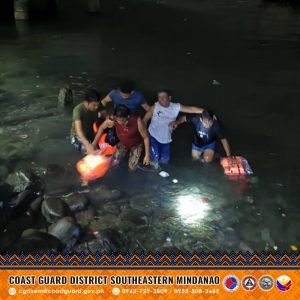Communities living close to the river banks where sand and gravel quarry operations exist become more vulnerable to disasters, claims a study by a local environment group.
The Interfacing Development Interventions for Sustainability (IDIS) yesterday said there is a spike in the approved sand and gravel applications to meet construction aggregates that can support the rapid infrastructure boom in the city. The extraction, IDIS executive director Chinkie Peliño-Golle said, poses a threat to the river systems and the surrounding environment.
They raised concern that these extractions operate within or near the city’s conservation areas.
Lawyer Mark T. Peñalver, IDIS project coordinator, said the City’s Comprehensive Zoning Ordinance clearly prohibits the “exploitation of quarry resources and commercial and sand and gravel resources” and the Watershed Code also “prohibits quarrying in conservation areas and in Agroforestry and Agricultural Non-Tillage Areas [Art. 9].”
On May 5, 2015, an ordinance that bans mining operations was passed in the city. Ordinance No. 0325-15 otherwise known as “An Ordinance Closing Off the City of Davao to Mining Operations” was authored by the late councilor Leo Avila III and councilor Danilo Dayanghirang.
Section 5 of the ordinance states that “no approval shall be granted or issued by the city through its Sangguniang Panglunsod to any person, natural or juridical, to undertake any and all forms of mining operation in any area within the territorial jurisdiction of Davao City, except rocks and mineral substances classified under the quarry resources.”
As an exception, the ordinance does not cover the extracting of rocks and other minerals under the classification of “quarry resources.”
Quarry resources are any common rock or other mineral resources that does not contain what the ordinance specified as metals or metallic constituents or other valuable minerals in economically workable quantities.
IDIS study
The study was conducted to assess the environmental conditions of areas where there are quarry operations. It specifically aimed to: inspect environmental conditions of quarry areas and compliance of quarry operators to environmental policies; assess existing monitoring scheme of CENRO as the lead agency tasked to monitor quarry operations in the city, and; validate compliance of quarry operators to existing environmental policies in Davao City.
The results of the study show that: “there is a lenient system of approval for permittees having approved operators to extract resources within and near conservation areas, violating existing environmental laws of the city and threatening what are supposedly priority areas for protection. Further, there is no clear indication as to whether reports/complaints (e.g. operating during night time) submitted to CMRB are acted upon – validated on the ground. On the ticketing system, what observed to have deficiencies is that the lack of actually weighing truckloads, ticket releasing is based only on the agreement of the ticketing officer and operator or depending on the allowed truck load capacity. Most cases the indicated weight is less than the actual agreed capacity which is favorable for the operator to over extract and obtain more profit.
“The current monitoring system is ineffective to check actual compliance of operations and real time conditions in the area given the low frequency of field visits citing distance and accessibility of the quarry sites from the city center.”
Some of the recommendations are for CENRO to develop enhanced and comprehensive approval process including validation of location/proximity to the City’s declared conservation zones, and requiring management plans from quarry operators to be disseminated to the public; DENR or the City Mining Regulatory Board should require and implement a programmatic environmental impact assessment of rivers to cover the whole stretch of the river including its tributaries; improve monitoring system to go beyond spot checks of declared volume of extraction to include environmental conditions in the area and effects to nearby communities, and; explore community-based reporting of violations and conditions through the BLGU tanod/police and community members.
It urges the city council to conduct a threshold capacity assessment especially for Davao and Lasang rivers; review and update the Mining Ordinance of Davao City and/or pass a separate Ordinance specifically regulating sand and gravel or non-metallic quarrying, and; ensure equitable benefit sharing to cover long-term costs of negative health, environmental and social costs to the communities in the area.
In an earlier interview with Mindanao Times, Penalver said that the presence of quarry sites could contribute to the degradation of the Davao river. IDIS had previously recommended mitigating measures in areas where quarry sites are present such as rehabilitation of the riverbanks and planting of trees in the highlands of the city.
He said they are very vigilant in monitoring the quarrying in the Davao river even if they are also aware that these extractive activities are needed for the city’s infrastructure development. The barangays, Penalver said, have the lead role in ensuring that the environment is protected and in monitoring quarry operations in their community.


